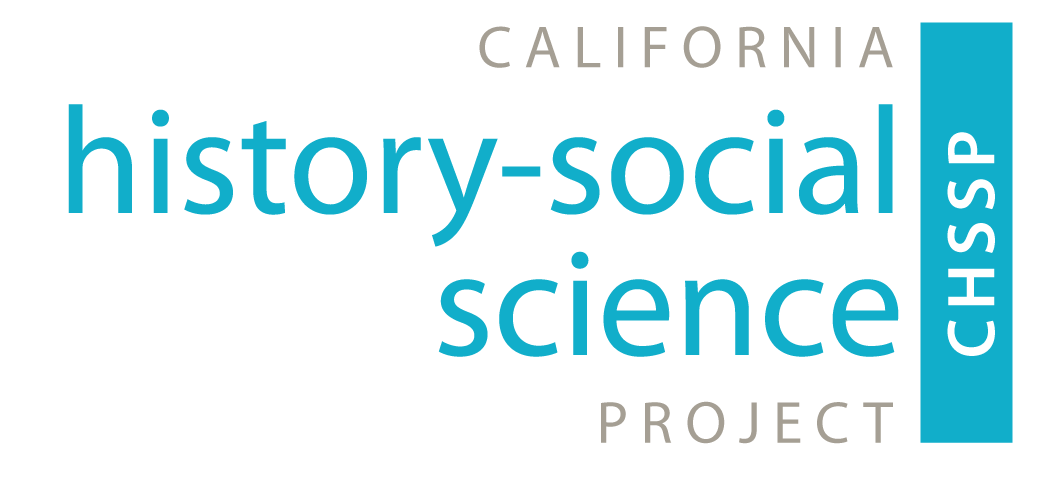Going to Work on the Civil War
Originally posted on April 7, 2011 by Shennan Hutton
Today we have our first meeting with the six teacher leaders who will be writing the Civil War unit. We are meeting online, which does present some challenges for communication. I’m sure we can surmount those difficulties, however, especially since this group of teachers seems to be so enthusiastic and accomplished.
All the teacher leaders teach 8th-grade U.S. History, and have worked as teacher leaders on History Project Teaching American History grants in the past.
The California History-Social Science content standard on the Civil War (see below) is quite a daunting challenge as well. It calls for students to understand the causes, events and consequences of the war, and includes ideas about the scope of state and federal authority, nullification and secession. Students are required to study the views of Daniel Webster, John C. Calhoun, Abraham Lincoln, Ulysses S. Grant, Jefferson Davis, and Robert E. Lee, and describe the impact of geographical features, technological advances and regional differences on the war itself. Finally, they have to “explain how the war affected combatants, civilians, the physical environment, and future warfare.”
The standard time consideration (2 class days per sub-standard) allots 14 days for teaching this Civil War standard. Since time considerations are vital to teachers, they will not be able to make use of our unit unless it fits within that time frame. They simply will not have time to teach a month-long unit, no matter how rich and engaging it might be.
So how will we approach writing curriculum for this standard on the Civil War? One option is to make a two-day lesson for each sub-standard. There are two problems with this option: First, not all sub-standards are equal in importance, and second, students will not understand the connections between the disparate facts they are learning. While we might be quickly grasp the connection between “the differences between agrarians and industrialists” at the end of sub-standard 2, and the “constitutional issues of nullification and secession” at the beginning of sub-standard 3, the average 13-year-old will likely miss the connection. We know that students retain more knowledge when they can place information into a conceptual structure. If there is no structure, students are less likely to remember information.
Another approach is to think of engaging activities for students to do. What would they enjoy learning about? How can the teacher make the unit fun? This is a very tempting option, and I have followed it many times. However, it has a grave drawback: the activities themselves become the focus of student learning, rather than the content. The students may truly enjoy themselves, but there will be gaps in their knowledge of the Civil War.
The approach we’ve learned in the History Project is called “Backwards Planning.”* We start out planning a unit by identifying what we want students to understand at the end of the unit. We identify four or five “essential understandings” from the standard, and determine what we want students to be able to do at the end of the unit. From those essential understandings, we design a historical investigative question to focus the unit. We then answer the question ourselves, so that we can be very clear about what we want students to learn. For example, if the historical investigative question was “Why was there a Civil War?” we would write most important causes of the war in order to articulate these to the students. The next step would be to divide up the unit into lessons, based on each of the essential understandings. Then we would pick the most appropriate primary sources, activities and teaching strategies to convey the understanding to students. We have learned that this process is time-consuming, but it yields the most cohesive and comprehensive results.
California History-Social Science Content Standard 8.10
Students analyze the multiple causes, key events, and complex consequences of the Civil War.
1. Compare the conflicting interpretations of state and federal authority as emphasized in the speeches and writings of statesmen such as Daniel Webster and John C. Calhoun.
2. Trace the boundaries constituting the North and the South, the geographical differences between the two regions, and the differences between agrarians and industrialists.
3. Identify the constitutional issues posed by the doctrine of nullification and secession and the earliest origins of that doctrine.
4. Discuss Abraham Lincoln’s presidency and his significant writings and speeches and their relationship to the Declaration of Independence, such as his “House Divided” speech (1858), Gettysburg Address (1863), Emancipation Proclamation (1863), and inaugural addresses (1861 and 1865).
5. Study the views and lives of leaders (e.g., Ulysses S. Grant, Jefferson Davis, Robert E. Lee) and soldiers on both sides of the war, including those of black soldiers and regiments.
6. Describe critical developments and events in the war, including the major battles, geographical advantages and obstacles, technological advances, and General Lee’s surrender at Appomattox.
7. Explain how the war affected combatants, civilians, the physical environment, and future warfare.
*Grant Wiggins and Jay McTighe, Understanding by Design, expanded 2nd ed. (Lebanon, IN: Prentice Hall, 2005).
